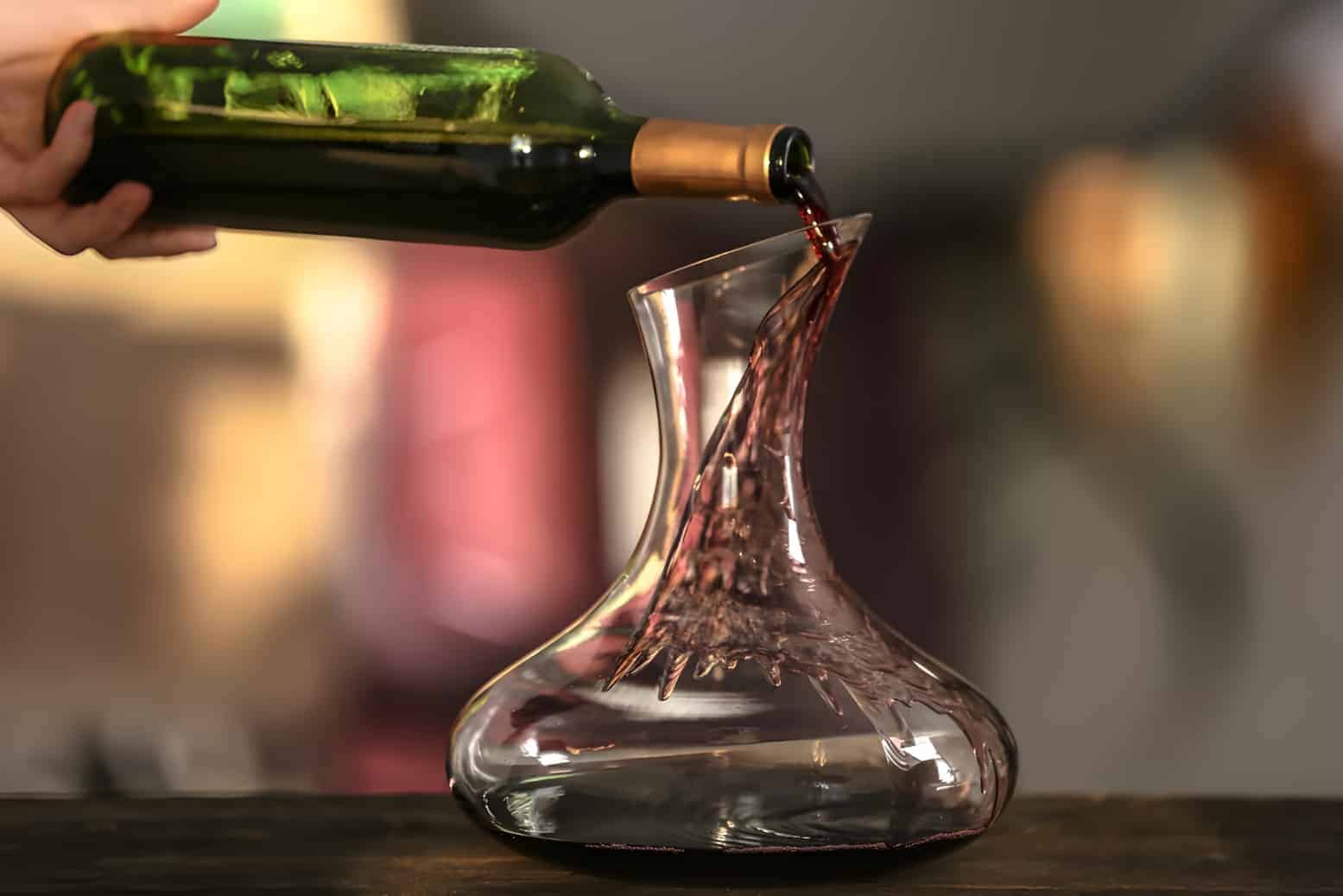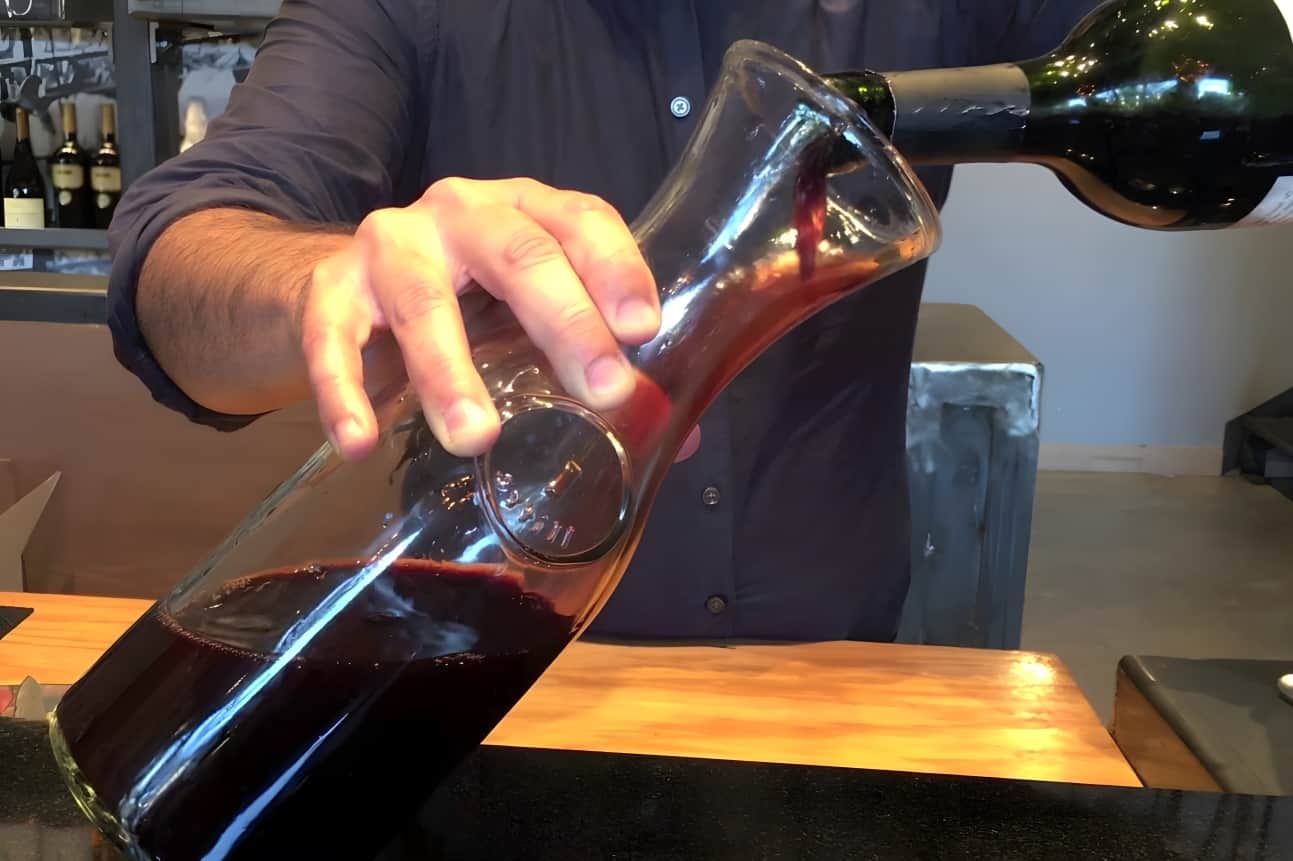Getting into the world of wine drinking can be a daunting task. We all know drinking wine has a sense of poshness and elegance, especially in a fine dining setting. This article will tell you how long to let your wine breathe and what the process entails.
Why Let Your Wine Breathe?
Before we get into how long, let’s first know how to let your wine breathe. Much like humans, the ‘breathing’ of the wine has something to do with oxygen. Letting your wine breathe is the process where the drink is exposed to oxygen before drinking. It’s a belief among many wine connoisseurs that aeration can lead to more vibrant and soft flavors of the wine.
As the oxygen mixes with the wine, it will release the aroma and soften the flavors of the drink. Some winemakers and sommeliers believe that the tannins can be oxidized by aerating the wine. Letting the wine breathe is done with a decanter or bottles. The aeration leaves the wine open and enables the air to blend into it.
This practice is new, as it cannot be traced back historically. The approach seemed to be more popular once bottled wines became more available. However, aerating wines can be traced back in time.
Before the advent of bottles, wines were commonly mixed with sulfur for preservation. However, the strong smell of sulfur mixes with the taste of the wine. To remedy this, the process of decantation is introduced.
Like the old practice, the smell of sulfur or fermentation can subside when you let your wine breathe. It leads to a purer fruity taste and a more robust wine flavor.
How Long to Let Your Wine Breathe?
| Type of Wine | Duration |
| Red Wine | 20 to 30 minutes |
| White Wine | 10 to 15 minutes |
| Sparkling Wine | 5 to 10 mins. |
| Fruity Wine (Red or White) | No aeration needed |
The time of letting your wine breathe can differ for every bottle. However, the color of the wine is a strong indicator of how long you should let it breathe.
Most red wines contain more tannins than white wines, so letting them breathe for 20 to 30 minutes is needed. The longer duration removes as many tannins as possible. It can eliminate the intense flavors from the fermentation process.
White wines, on the other hand, needs less time to aerate. A good 10 to 15 minutes in the decanter is enough. The oxidation lets the earthy flavors of white wine shine through.
Although not needed, sparkling wine can also have benefits when placed in the decanter. A good 5 to 10 minutes can go a long way. It can showcase the strong aroma and flavors of sparkling wine.
As a benchmark, the lighter the wine is, the lesser time it needs to oxidize. You can damage the flavors by letting the wine sit too much in the open air. That’s why taking a few sips are you let it breathe can also be helpful.
Do All Wines Need to Breathe?
No, certain wines do not need to aerate. You can enjoy fruity and old wines can be straight from the bottle. Wines with solid fruit notes are excellent for consumption after it’s poured from the bottle. It’s to preserve its natural flavors before oxidation.
Although it’s a widespread belief, oxidation can damage older wines. Too much air can mellow out the delicate and intricate flavors of the old wine—the older the wine, the more sensitive it can get.
Effects of Letting Your Wine Breathe
Now you know how long to let your wine breathe, let’s get into the effects. As stated, the process is commonly done to accentuate the flavors of the wines. However, let’s dive a little bit deeper.
Lighter Flavors
Oxidation can break down the tannins in the wine. It can lead to lighter and subtle flavors. As most know, tannins have a slightly bitter taste. You can minimize the flavor from the tannins by letting the air into the drink. It is essential to keep your wine from having a strong bitter taste.
Better Aroma
Letting the wine in the open air for a few minutes can elevate its aroma. This benefit is still connected to the wine’s tannins and sulfur content. Sulfur and tannins are produced when the wine is under fermentation. It can lead to a slight rotten egg odor. However, this problem is more prevalent with older wines.
The lighter flavor also lightens the smell, producing a more delicate and better aroma. If you let your wine breathe, you can compare the one from the bottle to the one sitting in the room.
Purer Taste
You can have a purer wine by eliminating the unwanted flavors and aroma. It can lead to a more fruity note and keeps the bold flavors intact.
Do You Need to Let Your Wine Breathe?
The answer depends on your preference. Although it’s a common practice in wine, much research is still needed to show that oxidation significantly impacts the flavors. You need to remember that oxidation leads to lighter flavors. If that is something you want to taste in your wine, let it breathe for a short time.
If bolder flavors from the fermentation are what you are looking for, then drink the wine immediately. It can lead to a more earthy taste for the oak-fermented wine and more robust flavors from the tannins.
The best flavors will vary from person to person. If you want to ensure that your wine is to your liking, you can take a small amount and check the flavors. If the wine has too many bold flavors, oxidizing for a few minutes can help it have lighter flavors. On the other hand, if the taste is already favorable, letting the wine breathe is unnecessary.
In Summary
How long to let your wine breathe varies in duration. For every type of wine, there is a recommended time to let aerate. However, all of it comes down to your taste and the flavors you love.

George Moore, co-founder of Wine Flavor Guru, is a charismatic entrepreneur with a rich background in California’s wine industry. Alongside Sylvia, he transformed a Sonoma County vineyard into a source of premium wines. George’s expertise in sourcing exceptional grapes and his approachable style make wine appreciation both accessible and engaging.





